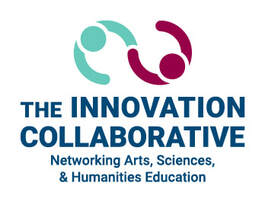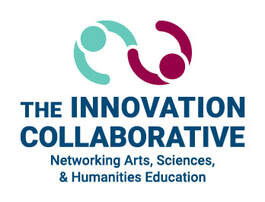
In its position as a national STEAM education trailblazer, the Innovation Collaborative has adopted a position on STEAM education.
This position was thoughtfully developed by a team of Collaborative leaders representing arts, science, and humanities institutions, with continuous input by all Collaborative members across disciplines and learning settings.
This position was thoughtfully developed by a team of Collaborative leaders representing arts, science, and humanities institutions, with continuous input by all Collaborative members across disciplines and learning settings.
The Innovation Collaborative’s Position on STEAM Education
STEAM (sciences, technology, engineering, the arts, humanities, and math) is an approach to education that promotes student-led explorations driven by curiosity and the application of competencies and practices across disciplines that can effectively and equitably prepare them for success in education and the 21st century workforce.
This approach includes but is not limited to
We are offering a fresh way of looking at arts integration as transdisciplinary where it goes beyond the separated approaches informing each other to the infusion of skills, practices, and knowledge through the simultaneous experience of the various disciplines. Transdisciplinary approaches allow for the holistic use of disciplinary processes to promote cognitive and affective growth.
STEAM (sciences, technology, engineering, the arts, humanities, and math) is an approach to education that promotes student-led explorations driven by curiosity and the application of competencies and practices across disciplines that can effectively and equitably prepare them for success in education and the 21st century workforce.
This approach includes but is not limited to
- Observing the world, asking questions, and visualizing solutions
- Developing the mindset of interdependence among the disciplines for deeper understanding and synthesizing
- Creatively problem-solving
- Collaborating in and across the disciplines
- Persisting through explorations and innovation using multiple perspectives
- Evaluating and communicating ideas
- Critically reflecting
- Assuring that all student populations, including those historically underserved, have equitable access to STEAM education benefits.
We are offering a fresh way of looking at arts integration as transdisciplinary where it goes beyond the separated approaches informing each other to the infusion of skills, practices, and knowledge through the simultaneous experience of the various disciplines. Transdisciplinary approaches allow for the holistic use of disciplinary processes to promote cognitive and affective growth.
